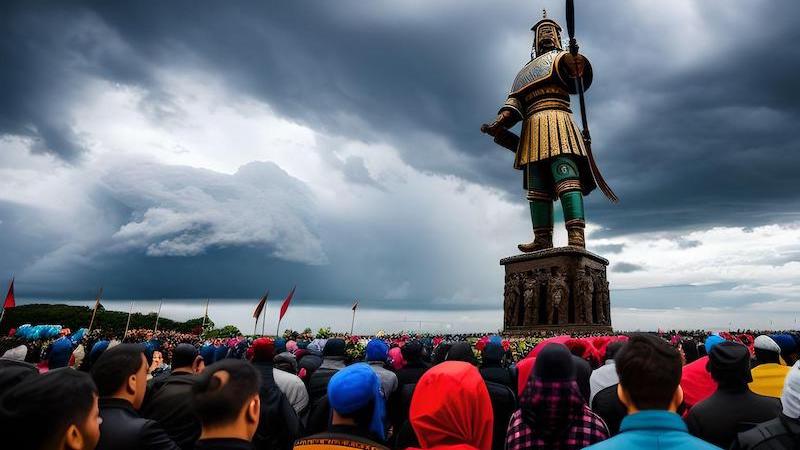The god of patriarchy is an effigy of the Bronze Age nomadic warrior
- 1 September 2023
- Posted by: Michael H Hallett
- Category: History , Patriarchy ,

The Book of Genesis tells us that “God created man in his own image” (1:27). The historical and psychological reality is diametrically opposite: man created God in his own image. When was this effigy created?
The Fall
In The Fall, psychology lecturer Steve Taylor writes: “The main event in human history is a sudden, massive regression – a dramatic shift from harmony to chaos, from peace to war, from life-affirmation to gloom, or from sanity to madness.”
With this the peaceful Neolithic Age ended, and the violent Bronze Age began.
Cultural historian Riane Eisler writes that this was “a change so great, indeed, that nothing in all we know of human cultural evolution is comparable in magnitude.”
In his monumental work Saharasia geographer James DeMeo documents how, from sporadic beginnings around 6000 BC, decreased rainfall in the Sahara, the Middle East, Arabia, and what are now the deserts of Central Asia caused these areas, previously savannahs teeming with wildlife, to become arid.
The consequences were profound: “After 6000 BC, sites in Anatolia, Syria, and Iraq yield evidence of drought, decline, and/or disturbed social conditions… Bodies of victims, mostly children… were found… Building construction and metallurgical knowledge were also first refined and advanced in Saharasia following the onset of drier conditions, as were various forms of central-state and military apparatus.”
By 4000 BC these changes had become embedded.
Famine
The chain of events was simple. Long-term drought caused desertification which caused famine. Famine turned peaceful, fertility goddess-worshipping hunter-gatherers into war god-worshipping nomadic warriors.
These physical changes were driven by a deeper psychological change. The pain of long-term malnutrition was so extreme that humanity’s default psychological paradigm changed. The fear of famine drove an extreme urge for its opposite: stockpiling.
Nomads displaced by desertification seized viable food and water sources and established the earliest patriarchies, like the Sumerians.
Samuel Noah Kramer writes that “Sumerian culture fostered an obsessive drive for wealth and possession… obsessive concern… with grain-laden fields, vegetable rich gardens, bulging sheepfolds, milk, cream and cheese in profusion.”
Yet, despite this obsession with fertility, they did not worship fertility.
They created war gods that were effigies of the violent nomadic warriors who came to power in the Middle East, Arabia, and Central Asia. This effigy is well documented in the Old Testament and later migrated into the father god figure of Christianity.
Effigy
Why is this important? Because this effigy still lives inside us.
It’s part of a complex, interlocking set of destructive psychological beliefs and behaviours that I term the Patriarchal Operating System.
In The Return of the Prodigal Son, Catholic priest Henri Nouwen writes that “even my best theological and spiritual formation had not been able to completely free me from a Father God who remained somewhat threatening and somewhat fearsome.”
Whether we hold religious, secular, or even atheist beliefs, we still worship the same violent stockpiling god as the Sumerians. Sheepfolds, milk, and cream have given way to bitcoin, tax havens, and superyachts.
Don’t get me wrong. I’m not saying that money is bad. Only that eight billion people are unconsciously reacting to an issue that happened six millennia ago, rather than consciously responding to today’s challenges—like sustainability.
That’s because the ancestral trauma of the Sumerians and other early patriarchies has been handed down to us through epigenetic inheritance.
Until we recognise and release that trauma, we’ll continue to worship the same effigy of the Bronze Age nomadic warrior from the dawn of patriarchy—and the same inequalities that arose at that time will continue to plague us.
Image generated using Fotor AI
